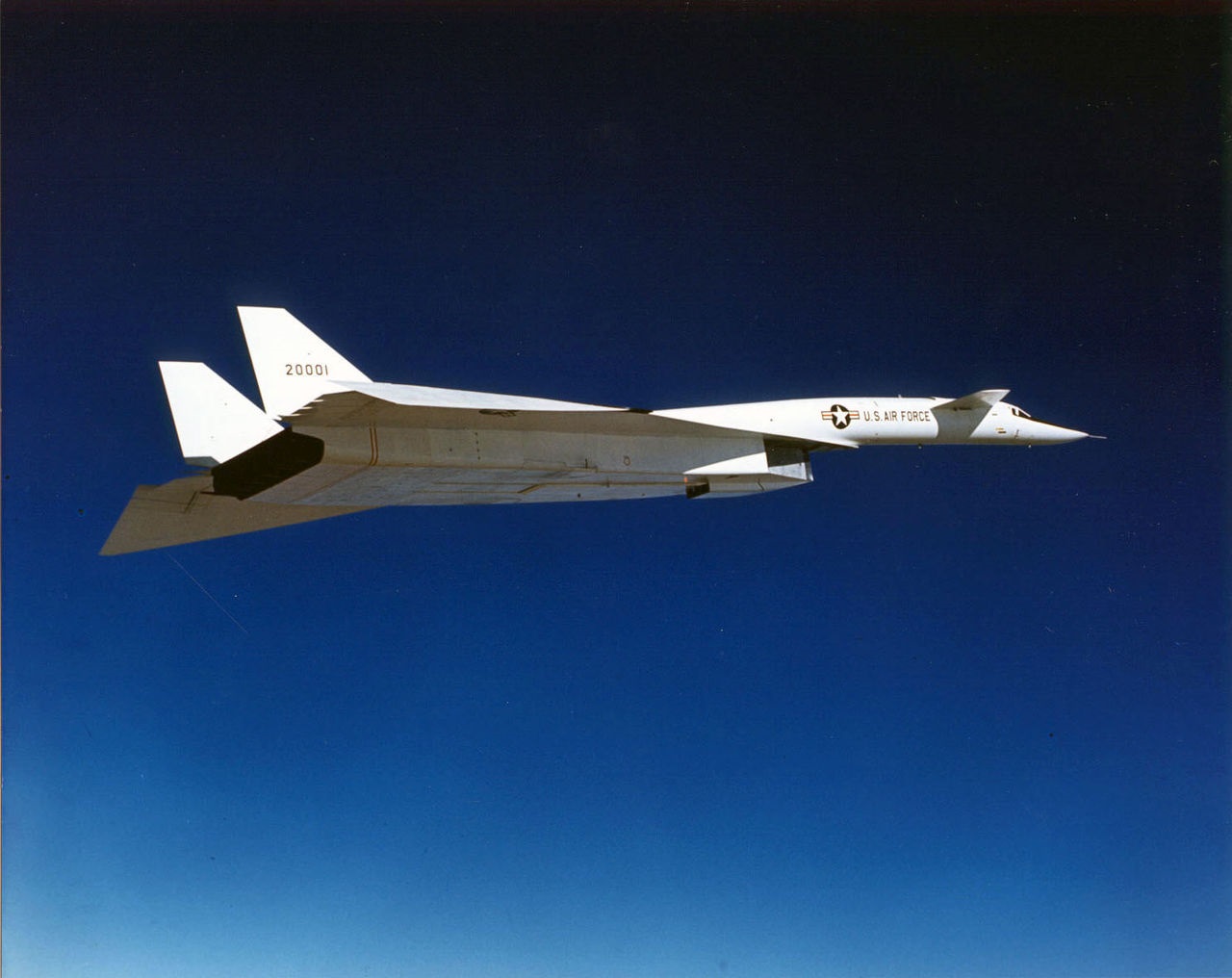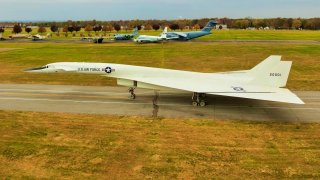XB-70A: The Gorgeous Mach 3.1 Bomber Built for Battle with Russia
The first XB-70A – which is now on display at the National Museum of the United States Air Force – first flew in from Air Force Plant 42, Palmdale, California, to Edwards Air Force Base in September 1964, with Chief Test Pilot Alvin S. White and Colonel Joseph F. Cotton, U.S. Air Force, at the controls.
The XB-70A had one mission: to wage a nuclear war against Russia if the Cold War ever went truly hot: On display at the National Museum of the United States Air Force at Wright-Patterson Air Force Base (AFB) outside of Dayton, Ohio, is the sole surviving prototype of an aircraft that was originally conceived in the 1950s as a high-altitude, nuclear strike bomber that could fly at Mach 3 (three times the speed of sound). What makes this especially impressive is that the futuristic-looking XB-70 "Valkyrie" took to the skies just a mere six decades after the Wright Brothers made their first flight.
It was a testament to the progress made in aviation design in the first half of the 20th century.
The XB-70A, built by the North American Aviation (NAA) Los Angeles Division for the U.S. Air Force, was an experimental high-speed, delta-wing aircraft designed to fly at Mach 3 – three times the speed of sound – and higher than 70,000 feet (21,000 kilometers). The goal of the program was to develop a high-altitude, nuclear strike bomber that could outrun any interceptor sent against it. The planned B-70 was to be a nuclear-armed, deep penetration supersonic strategic bomber for the Strategic Air Command.
With its delta-wing profile, it isn’t hard to see the similarities in the overall design of the experimental XB-70 and the British-French turbojet-powered Concorde supersonic passenger airline that was operated from 1976 until 2003. However, the B-70 had actually been conceived well before any consideration was likely given to the high-speed passenger airliner.
As initially planned, the XB-70A – which was powered by six General Electric YJ93s of 30,000 lbs. thrust each with an afterburner – was to have a maximum speed of Mach 3.1 (2,056 miles per hour, or 3,309 kilometers per hour). At 35,000 feet (10,668 meters), it could reach Mach 1.90 (1,254 miles per hour, or 2,018 kilometers per hour), while at its service ceiling of 75,550 feet (23,012 meters), it had a maximum speed of Mach 3.00 (1,982 miles per hour, or 3,190 kilometers per hour). The planned combat range of the B-70 was to be 3,419 miles (5,502 kilometers) with a maximum range of 4,290 miles (6,904 kilometers).
The belief among military planners was that the bomber could simply fly so high and fast that any enemy, notably the Soviet Union, couldn't have easily defended against it. However, the one thing that the XB-70 Valkyrie couldn't outrun was the progress that was being made with missile technology.
In fact, by the early 1960s, Surface-to-Air Missiles (SAMs) technology had vastly improved, which in turn threatened the survivability of even high-speed, high-altitude bombers. At the same time, less costly, nuclear-armed ICBMs (Intercontinental Ballistic Missiles) were entering service. As a result, in 1961, the expensive B-70 bomber program was canceled before any Valkyries had been completed or flown.
It was also expected that each aircraft would cost an estimated $24.5 million (nearly $240 million in today's money), which proved simply far too expensive for such an aircraft.
That could have been the end of the line for the Valkryie, but the United States Air Force still moved forward with the program and bought two XB-70As to test aerodynamics, propulsion and other characteristics of large supersonic aircraft. The XB-70 Valkyrie proved to be a perfect testbed for SST research, which was being conducted jointly by NASA and the Air Force. It was the same size as the projected SST designs and used similar structural materials, such as brazed stainless steel honeycomb and titanium.
The first XB-70A – which is now on display at the National Museum of the United States Air Force – first flew in from Air Force Plant 42, Palmdale, California, to Edwards Air Force Base in September 1964, with Chief Test Pilot Alvin S. White and Colonel Joseph F. Cotton, U.S. Air Force, at the controls.

The aircraft achieved Mach 3 flight in October 1965, and the prototype continued to fly and generate valuable test data in the research program until it was retired after conducting its final research flight on Feb. 4, 1969. It was sent to the museum later that year.
A second Valkyrie first flew in July 1965, but in June 1966, it was destroyed following an accidental mid-air collision, which resulted in the death of the co-pilot Maj. Carl Cross. A third Valkyrie was not completed.
About the Author
Peter Suciu is a Michigan-based writer who has contributed to more than four dozen magazines, newspapers and websites. He regularly writes about military hardware, and is the author of several books on military headgear including A Gallery of Military Headdress, which is available on Amazon.com. Peter is also a Contributing Writer for Forbes.


